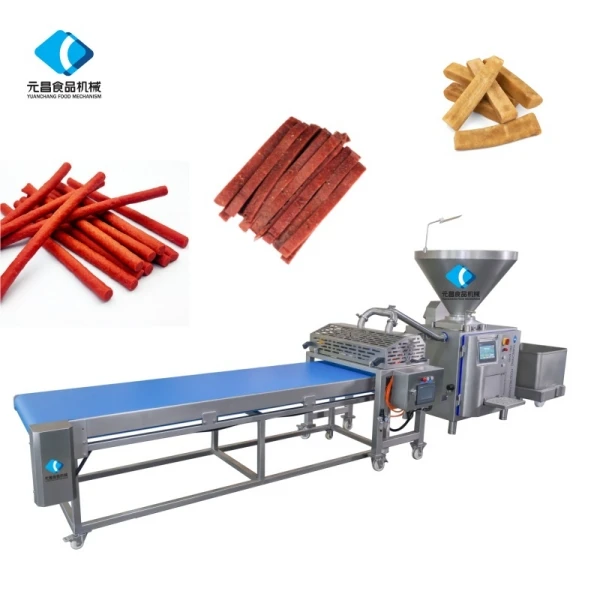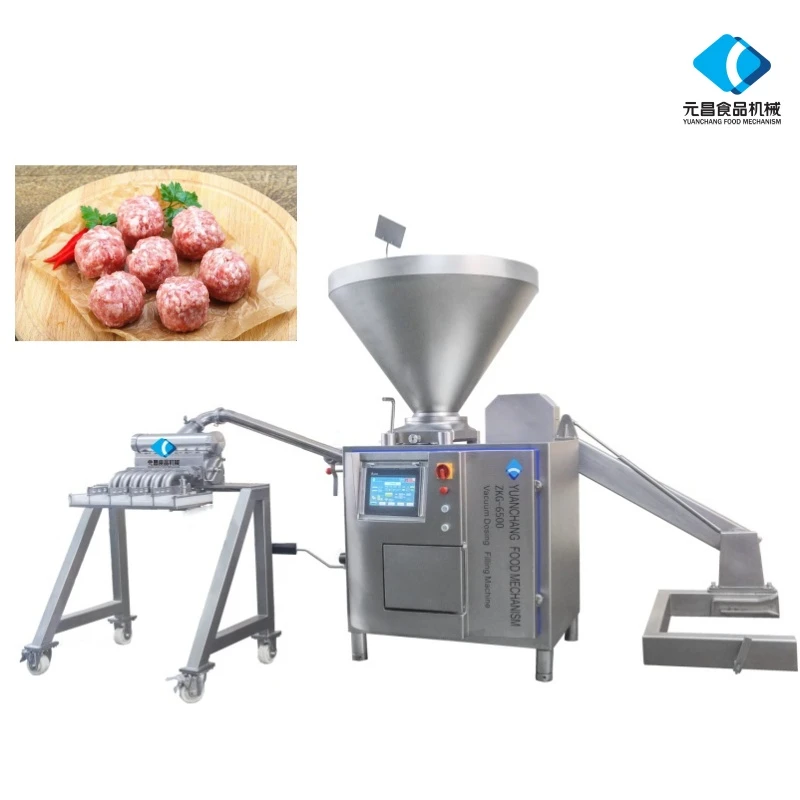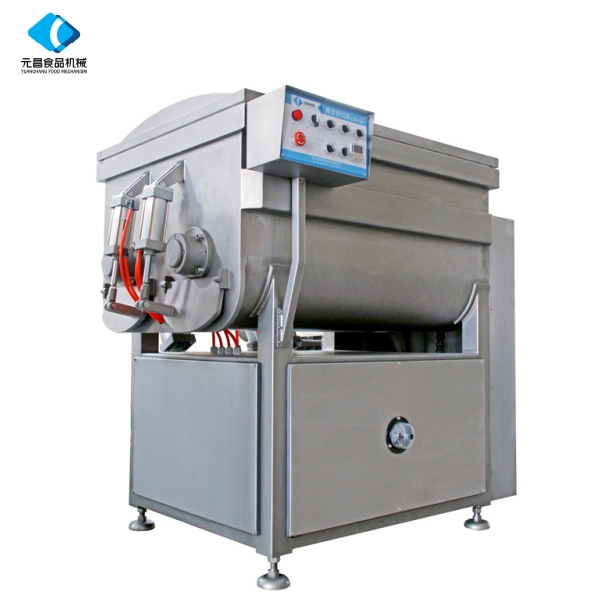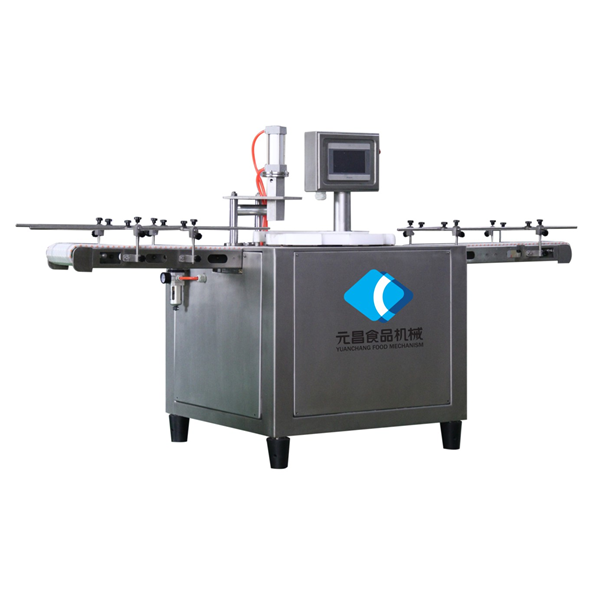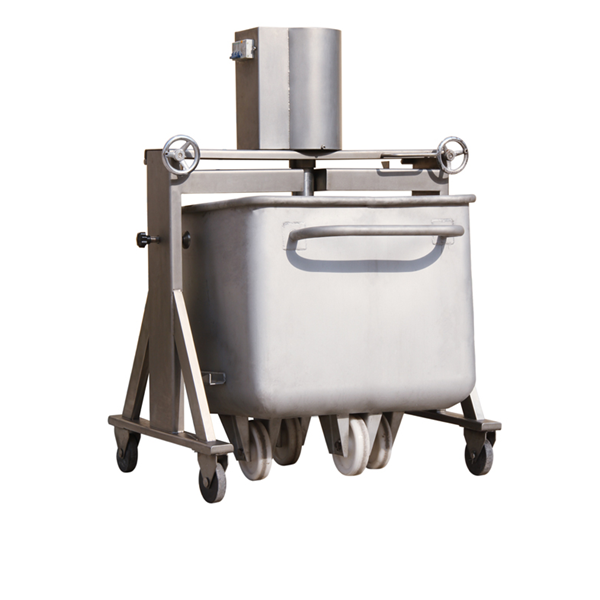Nov . 24, 2025 21:30
Back to list
Meat Portioning Machine: Precision, Efficiency & Sustainability in Meat Processing
Meat Portioning Machine: Why It Matters in Today’s Food Industry
If you’ve ever wondered how steakhouses serve such perfectly sized cuts or how big food processing plants keep consistency down to the gram, a meat portioning machine plays a quiet, crucial role. These machines help companies portion meat precisely, reducing waste, improving safety, and speeding up production. Globally, with rising meat demand driven by population growth and changing diets, these machines have become game changers in food supply chains — ensuring quality, efficiency, and sustainability all in one go. The global meat market is expected to surpass $1.2 trillion by 2026, according to the Food and Agriculture Organization of the United Nations (FAO). With such scale, standardizing portions isn’t just a matter of convenience — it’s a necessity. Especially in developing countries or large-scale producers, the right portioning technology means meeting regulatory standards, reducing food loss, and even saving costs for producers and consumers alike. ---The Big Picture: Meat Portioning Machines in a Global Context
To put it simply, meat portioning machines are stamping their mark worldwide. From industrial abattoirs in Brazil to boutique butchers in Europe, these machines are about precision and hygiene. According to the ISO 22000 food safety standards, consistent portion control also helps streamline quality management and traceability — something any responsible producer can’t ignore. But here’s the catch: manual portioning isn’t just time-consuming; it’s prone to error, and frankly, downright exhausting. Especially in disaster relief or humanitarian efforts, where food supplies are both scarce and precious, meat portioning machines ensure distribution is even, fair, and safe. So, global demand for these tools has surged not just in commercial kitchens, but also in NGOs and military food logistics. ---So, What is a Meat Portioning Machine Anyway?
At its core, a meat portioning machine is equipment designed to cut, slice, or weigh meat into consistent portions. These machines might be fully automated or semi-manual, adapting to various types of meats — whether beef, pork, poultry, or even fish. Their designs vary wildly, from conveyor systems that slice carcasses into steaks, to vacuum-press machines for ready-to-cook packs. What’s key is how they bridge the gap between traditional butchery skills and modern industrial needs. They help scale food production while respecting hygiene, accuracy, and, importantly, labor safety. In humanitarian contexts, these machines enable faster meal prep, reduce human contact with raw meat (cutting contamination risks), and bring dignity to food distribution operations. ---Core Components and Key Considerations
1. Durability & Hygiene Standards
Machines usually come with stainless steel frames and food-safe coatings. Sturdiness is crucial; these tools must withstand heavy use, frequent washdowns, and corrosive environments without rusting or degrading.2. Precision & Automation Levels
Some models are operated manually with hand sliders, while more advanced types boast AI-driven weight sensors that adjust cuts on the fly. Precision reduces waste and ensures every portion meets exact weight standards.3. Scalability & Throughput
Depending on the scale, producers select machines capable of slicing a few hundred kilograms a day up to several tons per hour. Scalability is vital, especially for companies expanding exports or meeting seasonal surges.4. Cost Efficiency & Maintenance
While upfront costs vary broadly, the real game is in maintenance and energy efficiency. Modular designs simplify repairs, and energy-saving motors reduce ongoing costs — a must in large facilities.5. Safety Features
Sharp blades and heavy mechanical parts make safety a must. Many machines have built-in sensors to stop cutting instantly if a problem is detected, protecting operators from injury. Mini takeaway: A great meat portioning machine isn’t just about slicing meat — it’s about lasting quality, accuracy, and operational fluidity. ---Where in the World You’ll Find Meat Portioning Machines at Work
Industrially, South America leads with meat production—Brazil largely automates its enormous beef supply chain with advanced portioning machines. Europe’s meat processors focus on strictly regulated quality and food safety standards, upgrading machines to meet environmental protocols. Beyond commercial processing, in remote industrial zones like Alaskan fishing towns or Australian cattle ranches, compact portioning equipment helps reduce labor shortages and maintain supply consistency. Humanitarian groups often deploy semi-portable portioning units in refugee camps or post-disaster zones to ensure equal food distribution with minimal human error. Even restaurants and supermarkets now increasingly use smaller, bench-top portioning devices to speed up prep time and enhance product uniformity — catering to growing consumer demand for consistency. ---Advantages & Long-Term Value of Meat Portioning Machines
So why invest in one? Well, it comes down to tangible benefits: - Reduced waste: Manual cutting creates uneven portions and scraps; machines optimize cuts, protecting profitability and sustainability. - Consistent quality: Uniform portions mean better customer satisfaction, fewer quality complaints, and easier inventory control. - Labor safety and productivity: Automating slicing reduces worker injuries and frees staff for more complex tasks. - Food safety: Minimizing human contact lowers contamination risks, a big deal under ISO 22000 and HACCP food safety management. - Environmental impact: By reducing waste and using energy-efficient designs, these machines align with growing corporate sustainability goals. Emotionally, there’s a comfort in knowing your food is handled with precision and care. Operators feel safer, consumers get consistent meals, and companies build trust through transparency. ---The Future: Innovation and Trends in Meat Portioning Technology
We’re seeing exciting tech trends merging with these machines: - Digital integration: Smart portioning devices hooked to cloud analytics allow real-time tracking of production metrics, waste patterns, and predictive maintenance. - Eco-conscious designs: Renewable energy-powered machines and biodegradable lubrication materials are emerging, easing meat processors’ carbon footprints. - AI and robotics: Autonomous robots with visual recognition can now identify parts of irregular carcasses to maximize yields — something previously unimaginable. - Compact modular units: Portable, easy-to-assemble machines expand usage possibilities to smaller farms, NGOs, and remote facilities. These innovations reflect a broader wave of food-tech digital transformation, where traceability, speed, and sustainability go hand in hand. ---Challenges and How to Overcome Them
Of course, challenges persist. High initial costs can be a barrier for small producers. Complex machines require trained operators and regular maintenance, which isn't trivial in remote areas. Moreover, diversity of meat types means universal solutions are tough to design. However, suppliers now offer leasing models, on-site training, and modular repair kits to ease adoption. Innovations in user-friendly interfaces — touchscreen controls, multilingual guides, and remote diagnostics — help overcome operational hurdles. Plus, using data-driven maintenance plans reduces unexpected downtime, a blessing in fast-paced production lines. ---Frequently Asked Questions About Meat Portioning Machines
- How accurate are modern meat portioning machines?
Most advanced machines achieve accuracy within 1-3% tolerance on weight, reducing product giveaway and meeting strict regulatory demands. - Can these machines handle frozen or partially frozen meat?
Yes, some models are specially designed with stronger blades and adjustable speeds to slice frozen blocks without damaging the machinery. - What maintenance is required to keep them running smoothly?
Regular cleaning, blade sharpening, and periodic calibration are typical. Many vendors include maintenance schedules and remote support options. - Are meat portioning machines energy-efficient?
Contemporary models often incorporate energy-saving designs and can be set to "standby" modes during downtime to reduce consumption. - How customizable are these machines for different portion sizes?
Highly customizable! Many come with easy-to-calibrate settings or interchangeable cutting heads to adapt to changing product lines.
Product Specification Table
| Specification | Standard Model X-200 | Advanced Model Z-500 |
|---|---|---|
| Cutting Precision | ±5 grams | ±1 gram (AI-assisted) |
| Throughput Capacity | 250 kg/hour | 1000 kg/hour |
| Material | 304 Stainless Steel | 316 Stainless Steel, food grade |
| Automation Level | Manual / Semi-automatic | Fully Automatic with AI Sensors |
| Power Consumption | 3.5 kW | 5.2 kW (Energy Efficient) |
Vendor Comparison: Choosing the Right Meat Portioning Machine Supplier
| Vendor | Price Range | Warranty | Support & Training | Customization |
|---|---|---|---|---|
| MeatTech Solutions | $15,000 - $50,000 | 2 years | On-site + Remote | High Customization |
| Precision Portioners Inc. | $20,000 - $70,000 | 3 years | 24/7 Remote Support | Medium |
| Global Food Machinery | $25,000 - $55,000 | 1 year | Limited On-site | Low |
A Quick Reminder: The Long-Term Impact of Investing in Good Meat Portioning Equipment
Choosing the right meat portioning machine isn’t purely about upfront numbers or specs. It’s about streamlining your entire production lifecycle and meeting modern consumer, safety, and sustainability demands. From improving yield and product reliability to enhancing worker safety and environmental care, these machines touch multiple parts of a complex ecosystem. So if you’re in the market, spending time to compare models, understand your throughput needs, and think about future automation will pay off. Or, if you’re a curious operator or supplier, the blend of tech and tradition embodied here is quite a fascinating industry slice. For more detailed options and tailored solutions, check out meat portioning machine experts to explore what fits your unique needs. ---References
Latest news
-
Discover the Benefits of Vacuum Marinating Machines for Efficient Food ProcessingNewsNov.24,2025
-
The Ultimate Guide to Commercial Chicken Scalders: Efficiency, Sustainability & InnovationNewsNov.23,2025
-
Chicken Harvesting Equipment: Efficient & Humane Solutions for Poultry ProducersNewsNov.22,2025
-
Comprehensive Guide to Meat Processing Plant Equipment | Efficiency, Safety & SustainabilityNewsNov.21,2025
-
Meat Processing Bins: Durable Solutions for Safe & Efficient Meat Handling WorldwideNewsNov.20,2025





